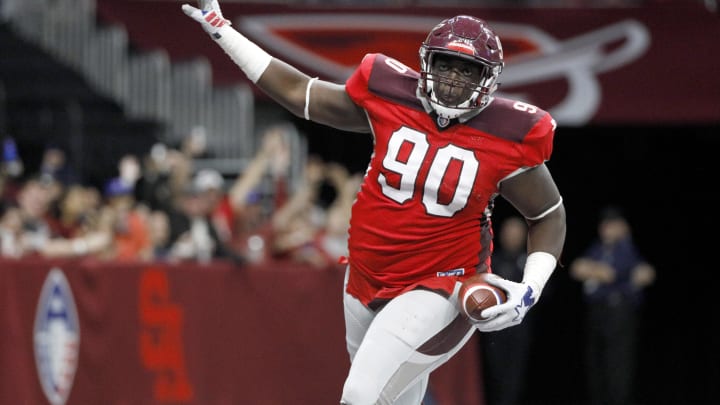Should UFL Steal Page From AAF, Add Territorial Draft?

A week ago, UFL president Russ Brandon told the Sports Business Journal that the offseason plan is to invest in local ticket sales teams in all eight league markets.
“Clearly, the point we’re investing in more is boots on the ground, selling tickets,” he said. “We have a full season of some really successful markets, and markets that we clearly need to invest more in, and that’s what this partnership is going to do.”
Added time and allocated resources from league shareholders and rights owners, Disney, FOX and RedBird Capital Partners should help the UFL boost an area of weakness in the merged USFL-XFL entity.
The UFL's 43 games, occurring from late March through mid-June, averaged 13,512 fans. The overall season attendance number was 581,016. The number was down from the XFL 2023's overall attendance tally of 632,247.
The UFL's average attendance also experienced a downturn from previous iterations of spring pro football in recent years.
Only two of the UFL's teams averaged over 12k in attendance, with St. Louis leading the way by a significant margin at 34k per game, followed by D.C. at 14k. In contrast, the Alliance of American Football in 2019 had five teams with a 12k average or better.
Undoubtedly, it's a different world than five years ago. However, the AAF had three of the same markets as the UFL and vastly outdrew them in those non-NFL cities. San Antonio Commanders (27k average) vs. the Brahmas (11k), Memphis Express (12k) vs. the Showboats (6k), and Birmingham Iron (14k) vs. the Stallions (10k).
The UFL saw great year-over-year growth in several metrics, but local support and interest is the league's most prominent sore spot.
Beyond improved scheduling, family-friendly pricing, more boots on the ground locally, with extended time spent connecting through community outreach, there is another way that the UFL can engender itself in its eight local markets.
By borrowing a page from the recent and not-so-distant past of spring pro football.
The UFL, which plans on having multiple player drafts leading into the 2025 season, including a rookie draft later this summer, should add another one to the mix — a territorial-styled draft as a compliment.
It's something that the Alliance of American Football did five years ago, and the original USFL implemented in the 80s, with teams holding territorial rights for local players.
The object of a regional selection draft would be to engender the UFL more to markets by having local players play in their cities and states.
The UFL won't have to start from scratch with existing players on teams that return for next season or adopt multiple-player allocation phases the way the AAF did. However, adding an extra region-based funneling system could strengthen the league's appeal to its local markets.
In super popular college football states like Alabama, having players from the Crimson Tide, Auburn, UAB and other universities allocated to the Stallions moving forward would effectively draw interest, and an attachment from local fans and media.
To that end, it's no surprise that Alabama's own A.J. McCarron helped produce the Stallions' best-attended game at Protective Stadium in the 2024 season. (14,056). McCarron's ties to that region brought out additional fans and garnered added media interest leading into the Birmingham-St. Louis game.
Since the UFL has three Texas teams, it could be challenging to allocate from universities properly in-state. However, the college-rich location has many programs to divvy equally for San Antonio, Arlington and Houston regionally.
There are potential competitive pitfalls in relying solely on a territorial based player allocation process. Chief among them is maintaining fairness in player evaluation and accumulation. Therefore, implementing a regional based draft as a complement rather than the sole means to roster building could offset those concerns.
Above all else, the UFL must create unity with all eight markets. They can do that if they unite the cities with the league. One way of accomplishing that effort is by making the local colleges and players a part of the league's story.
You can find Mike Mitchell on X @ByMikeMitchell.
Catch up with UFL on FanNation on Facebook and X.
